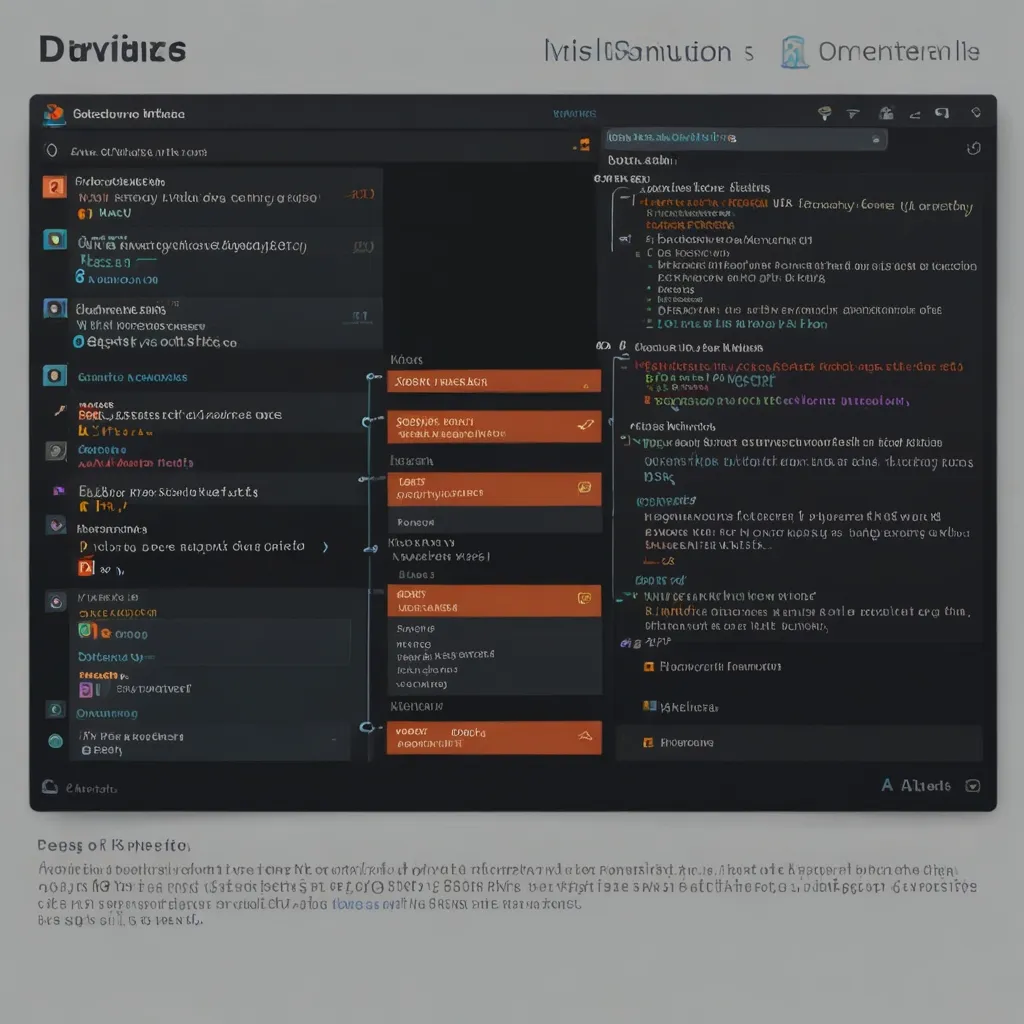C++ has come a long way since its inception, and one of the coolest additions in recent years is the Standard Library’s parallel algorithms. These bad boys can seriously boost your data processing game, making your code run faster and more efficiently.
So, what’s the deal with parallel algorithms? Well, they’re designed to take advantage of multi-core processors, which are pretty much standard in most computers these days. Instead of processing data sequentially, parallel algorithms can split the workload across multiple cores, getting things done in a fraction of the time.
Let’s dive into how you can use these parallel algorithms in your C++ projects. First things first, you’ll need to include the
There are three main execution policies you should know about: std::execution::seq, std::execution::par, and std::execution::par_unseq. The seq policy runs the algorithm sequentially, par runs it in parallel, and par_unseq allows for both parallelization and vectorization.
Now, let’s look at a simple example to see how this works in practice. Say you have a vector of integers that you want to sort. Normally, you’d use the std::sort algorithm like this:
std::vector
To use the parallel version, you just need to add the execution policy as the first argument:
std::sort(std::execution::par, numbers.begin(), numbers.end());
It’s that easy! With this small change, the sorting algorithm will now use multiple threads to get the job done faster.
But sorting isn’t the only algorithm that supports parallelization. Many of the algorithms in the
Let’s take a look at another example using std::transform. Say you want to apply a function to every element in a vector:
std::vector
std::transform(std::execution::par, input.begin(), input.end(), output.begin(), [](int x) { return x * x; });
This code will square every number in the input vector and store the results in the output vector, using parallel execution to speed things up.
Now, you might be wondering, “Is it always better to use parallel algorithms?” Well, not necessarily. There’s some overhead involved in setting up and managing multiple threads, so for small datasets, the sequential version might actually be faster. It’s always a good idea to benchmark your code with different execution policies to see what works best for your specific use case.
One thing to keep in mind when using parallel algorithms is that they can introduce race conditions if you’re not careful. For example, if you’re using std::for_each to modify a shared resource, you’ll need to use proper synchronization techniques to avoid data races.
Another cool feature of parallel algorithms is that they work seamlessly with other C++ features like lambda expressions and range-based for loops. This makes them super flexible and easy to integrate into your existing codebase.
Let’s look at a more complex example to see how these concepts come together. Say you have a large vector of strings, and you want to count how many of them contain a specific substring:
std::vectorstd::string words = {“apple”, “banana”, “cherry”, “date”, “elderberry”}; std::string substring = “err”;
int count = std::count_if(std::execution::par, words.begin(), words.end(), [&substring](const std::string& word) { return word.find(substring) != std::string::npos; });
This code will search for the substring “err” in parallel across all the words in the vector. Pretty neat, huh?
Now, I’ve got to admit, when I first started using parallel algorithms, I made a rookie mistake. I thought I could just slap std::execution::par onto every algorithm call and magically make my code faster. Boy, was I wrong! I learned the hard way that parallelization isn’t always the answer, especially for small datasets or simple operations.
One time, I was working on a project that involved processing a ton of sensor data. I had this huge vector of readings, and I needed to apply a complex transformation to each one. I thought, “Perfect! I’ll use std::transform with parallel execution and it’ll be lightning fast!” So, I wrote something like this:
std::vector
std::transform(std::execution::par, readings.begin(), readings.end(), processed.begin(), [](double x) { // Some complex, time-consuming calculation return std::sin(x) * std::exp(x) / std::log(x + 1); });
I ran my code, expecting it to finish in the blink of an eye. But to my surprise, it wasn’t much faster than the sequential version. After some head-scratching and profiling, I realized that the bottleneck wasn’t in the parallelization, but in the calculation itself. Each transformation was so computationally expensive that the overhead of managing multiple threads was barely worth it.
The lesson I learned? Always measure and profile your code. Don’t assume that parallel is always better. Sometimes, optimizing the algorithm itself can give you better performance gains than throwing more cores at the problem.
But don’t let my cautionary tale discourage you from using parallel algorithms. When used correctly, they can be incredibly powerful. For instance, in another project, I was working with a massive dataset of customer transactions. I needed to calculate some aggregate statistics, like the total amount spent by each customer. This was a perfect use case for parallel algorithms.
I used std::for_each with a parallel execution policy to process the transactions, and std::reduce to calculate the totals. The performance improvement was dramatic – we’re talking about cutting processing time from hours to minutes. It was one of those moments where you sit back in your chair, look at the results, and think, “Wow, this C++ magic is pretty awesome!”
Now, let’s talk about some best practices when using parallel algorithms. First, always consider the size of your data. Parallel algorithms shine with large datasets, but for smaller ones, the overhead might not be worth it. As a rule of thumb, if your dataset has fewer than 10,000 elements, you might want to stick with sequential execution.
Second, be mindful of the complexity of your operations. If each operation is very quick (like simple arithmetic), the overhead of parallelization might outweigh the benefits. On the other hand, if each operation is computationally expensive, parallel execution can really save the day.
Third, pay attention to memory access patterns. Algorithms that involve a lot of random memory access (like std::find in a non-contiguous container) might not see as much benefit from parallelization as those with more predictable access patterns (like std::transform on a vector).
Fourth, be careful with side effects. Parallel algorithms work best with pure functions that don’t modify shared state. If you need to modify shared data, make sure you’re using appropriate synchronization mechanisms to avoid race conditions.
Lastly, don’t forget about exception safety. Parallel algorithms can throw exceptions, and you need to make sure your code can handle them correctly. The standard guarantees that if an exception is thrown during the execution of a parallel algorithm, it will be caught and rethrown in the calling thread.
Let’s look at one more example that puts all these principles into practice. Imagine you’re writing a program to analyze a large collection of text documents. You want to count the frequency of words across all documents. Here’s how you might do it using parallel algorithms:
std::vectorstd::string documents = /* lots of documents */; std::map<std::string, size_t> word_counts; std::mutex word_counts_mutex;
std::for_each(std::execution::par, documents.begin(), documents.end(), [&](const std::string& doc) { std::istringstream iss(doc); std::string word; std::map<std::string, size_t> local_counts;
while (iss >> word) {
++local_counts[word];
}
std::lock_guard<std::mutex> lock(word_counts_mutex);
for (const auto& pair : local_counts) {
word_counts[pair.first] += pair.second;
}
});
This code processes each document in parallel, counting the words locally, and then merges the results into a shared map protected by a mutex. It’s a great example of how to use parallel algorithms effectively while still maintaining thread safety.
In conclusion, the Standard Library’s parallel algorithms are a powerful tool in your C++ toolbox. They can significantly speed up your data processing tasks, especially when dealing with large datasets or computationally expensive operations. But remember, with great power comes great responsibility. Always measure, profile, and test your code to ensure you’re using these algorithms effectively.
As you continue your C++ journey, don’t be afraid to experiment with parallel algorithms. Try them out in different scenarios, benchmark the results, and see where they can make a real difference in your code. And who knows? Maybe you’ll discover some cool optimizations or use cases that nobody’s thought of before. That’s the beauty of programming – there’s always something new to learn and explore. Happy coding!






